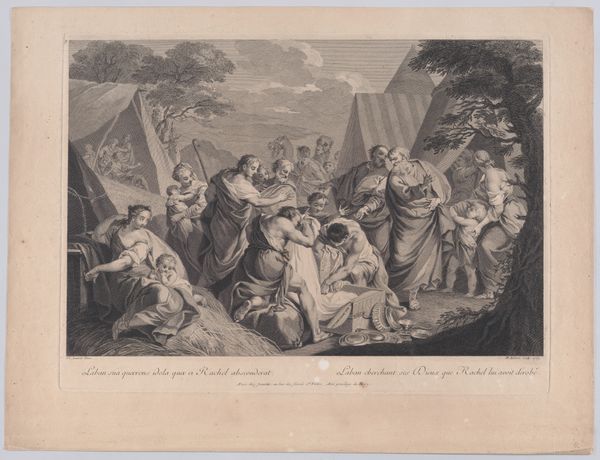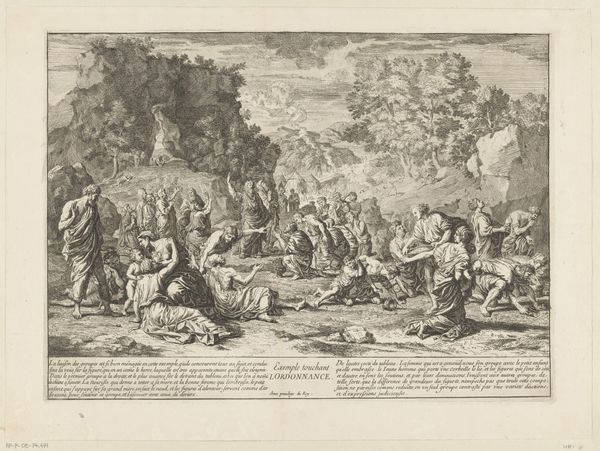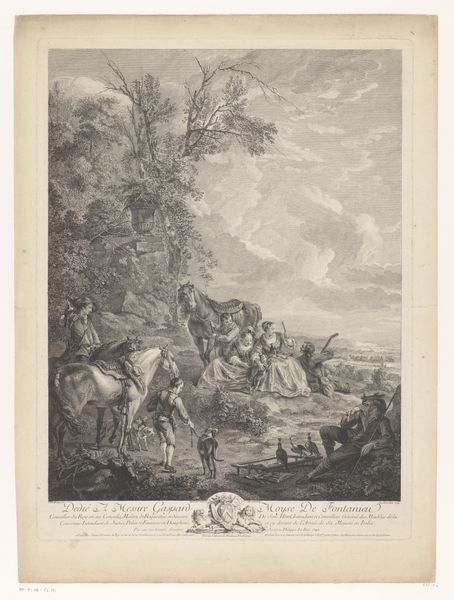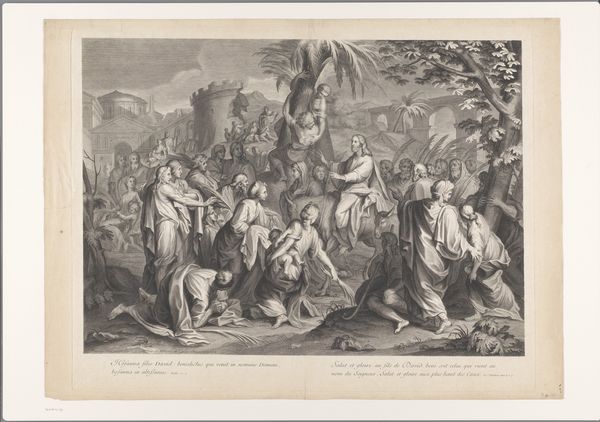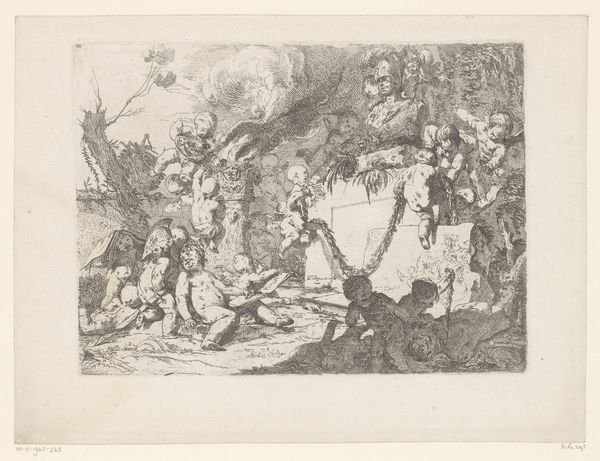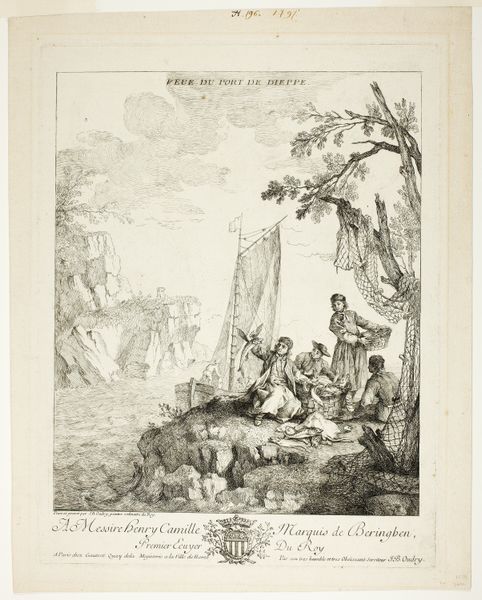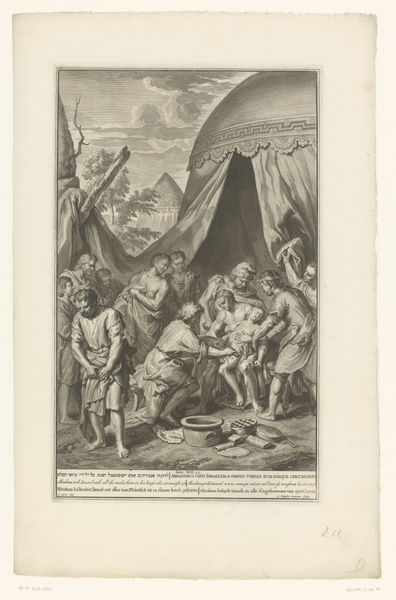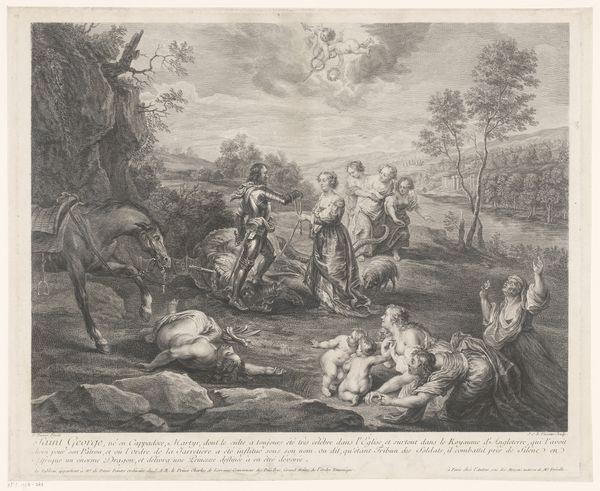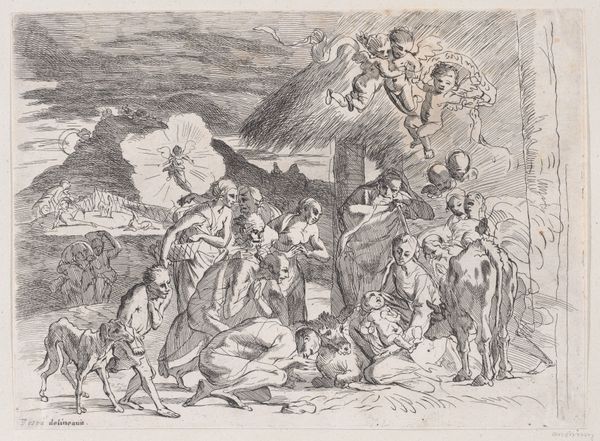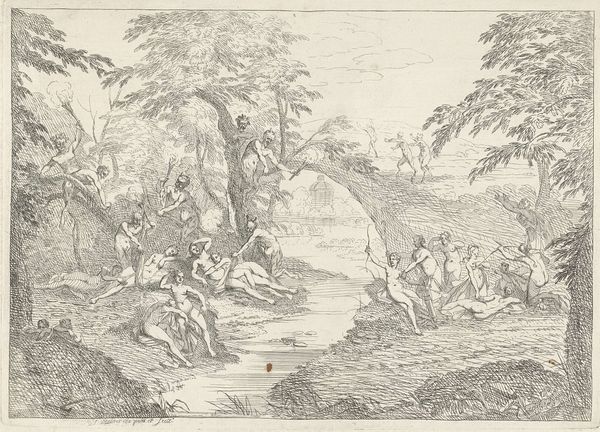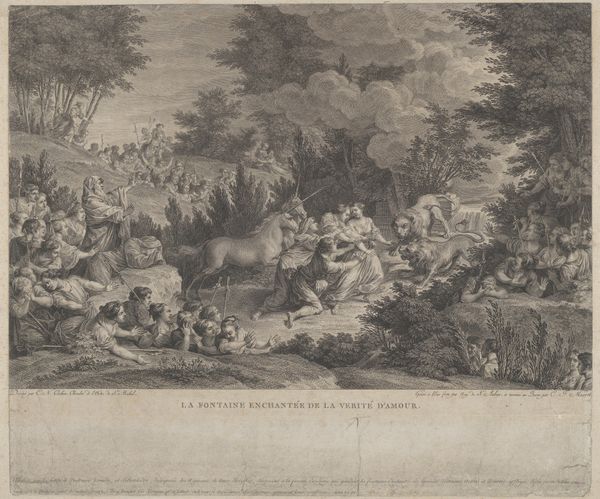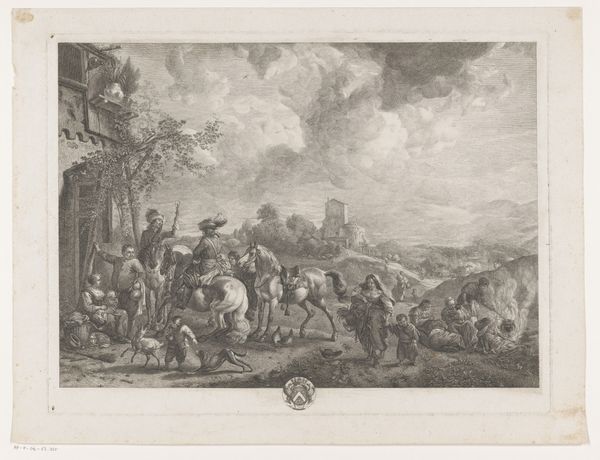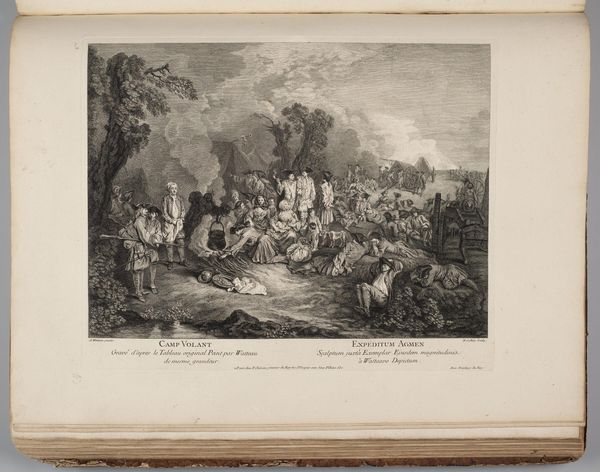
print, engraving
#
baroque
# print
#
pen sketch
#
pencil sketch
#
old engraving style
#
landscape
#
figuration
#
genre-painting
#
history-painting
#
engraving
Dimensions: height 205 mm, width 318 mm
Copyright: Rijks Museum: Open Domain
Curator: This artwork is called "Boslandschap met rustend jachtgezelschap" or "Wooded landscape with resting hunting party" by Pierre Antoine Quillard, created sometime between 1711 and 1733. It’s an engraving. Editor: It's got a languid, almost theatrical feel to it, hasn't it? All these figures arranged in this glade like players on a stage. You can almost hear the rustling of silk and smell the damp earth. Curator: The material aspect is crucial here, wouldn't you agree? The use of engraving, a printmaking technique, made the artwork reproducible, spreading the images of aristocratic leisure to a wider audience. Consider how labor-intensive this process would have been and its inherent economic impact, affecting both the art market and consumer culture. Editor: Precisely! And we have to place it within the context of the Baroque era. Hunting wasn't just sport; it was a performance, a symbol of power and status played out in nature’s “theatre”. This image, through its display in homes, reinforced those social hierarchies and norms, embedding aristocratic privilege. Curator: And observe how Quillard blurs the boundaries between different categories. The landscape isn't merely a backdrop, but a curated space. Notice that the landscape serves not just as scenery but a stage setting made in the style of the time, constructed from cloth hung in the trees? It makes the viewer question traditional distinctions between art and craftsmanship, the artificial versus the natural. Editor: This interplay underscores a key Baroque theme: the power of artifice to shape reality. Consider, also, the public function of displaying such scenes. It offered a narrative – a visual language for articulating societal values, aspirations, even control. Curator: The lines are exquisitely fine. It makes me wonder about the engraver's tools, their access, and how these limitations helped to shape his craft. The choice of ink, the paper used for the print. They influence not just aesthetics, but the very way meaning is transmitted. Editor: True, and we also see how social expectations influenced its reception! Was it just decoration, a conversation starter, or did it help solidify a patron's status? I suppose, it probably functioned on all those levels! Curator: It offers us, I think, an insight into the complex networks of production and display shaping perceptions of class and authority. Editor: Agreed. I find myself pondering now what was considered important at the time and who was deciding that those moments should be eternally frozen in time through engravings like this one.
Comments
No comments
Be the first to comment and join the conversation on the ultimate creative platform.
